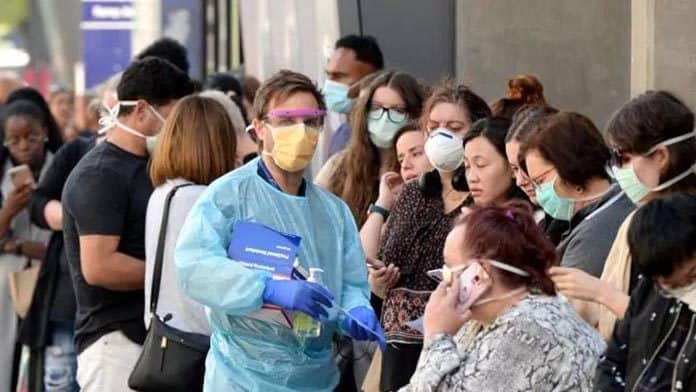The COVID-19 cluster on Sydney’s Northern Beaches (which spread to Melbourne) and the “leak” of the virus from a Brisbane quarantine hotel is a reminder that the pandemic continues to be a very real threat.
Globally, confirmed deaths have hit two million. Even countries where the pandemic seemed under control have experienced new outbreaks—in Germany, the daily per capita mortality rate since mid-December has often exceeded that of the US. In China, authorities are scrambling to control an outbreak in Hebei province.
According to Bloomberg, more than 34.5 million vaccine doses had been administered across 49 countries by mid-January—a drop in the ocean compared to the global population of 7.8 billion. In any case, evidence so far indicates that vaccines limit the severity of COVID illness rather than stopping the virus’s spread.
So the question continues to be: what is the best way of containing virus outbreaks in Australia?
Many argue that lockdowns are the main weapon to stop a cluster spreading. But some of the recent lockdowns have been little more than political theatre—South Australia instituted a lockdown in Adelaide in November, only to lift it in the light of better contact tracing information. The Queensland government locked down greater Brisbane for three days in January, only to record zero new cases for three days.
If public health teams are properly staffed and resourced to undertake mass testing with fast turnaround of results to allow for swift and effective contact tracing and self-isolation, breakouts can be contained.
Melbourne’s 112-day lockdown was imposed because the underfunded public health system was incapable of rising to the challenge. The Department of Health and Human Services had only 14 contact tracers by the time coronavirus took hold in Australia in March. There had been no preparation for mass, mandatory quarantine.
As Peter Collignon, a professor of infectious diseases at the ANU Medical School, told Nine newspapers, the taming of the most recent Sydney and Melbourne clusters “show current interventions and advice from health departments in NSW and Victoria have been effective at stopping spread without the total lockdowns many advocated”.
He continued: “If we look at past outbreaks in Australia—Adelaide, Logan in Brisbane, Sydney’s Crossroads Hotel—they, like the current clusters, have all been controlled by a combination of good testing, contact tracing, quarantining of close contacts and limits on the size of indoor events.
“Melbourne’s devastating second wave last winter was our major exception, but many important factors were poorly managed and these have now been markedly improved.”
Residents on the Northern Beaches were locked down to contain the recent outbreak, after “super-spreader” events at the Avalon RSL and Avalon bowling club saw dozens of people at the venues infected at the same time.
Testing shortage
But the relatively quick smothering of these recent clusters still hides a raft of problems. People on the Northern Beaches were threatened with fines for leaving the house, but were allowed to leave home and move across Sydney for work.
A media report detailed how a hairdresser travelled 40km from the Northern Beaches to Paddington in inner suburban Sydney, where one of her clients was a woman who worked at a local café. By the end of the appointment, the client had contracted COVID-19 and taken it back to her workplace.
There was a clear need for paid leave for workers to stay home—yet neither the ACTU nor Unions NSW issued such a call.
Even NSW’s supposed “gold standard” contact tracing system wobbled, failing to scale up testing quickly enough. In Wollongong, St Nektarios Greek Orthodox Church committee vice-president Kathy Tzanis said: “People have been obliging; the problem is it’s taking forever (to get tested), the lines are so long. There’s not enough testing stations.”
Yet it’s clear that effective contact tracing can get clusters under control if properly resourced. NSW Chief Health Officer Dr Kerry Chant said: “We’ve been having … upwards of 5000-6000 people that have been contact traced in any one time.” Public health staff were able to contact 1000 people who visited the BWS in Berala on New Year’s Eve and bring the outbreak to a close.
Public health workers know how to contain pandemics without resorting to lockdowns. But they are held back by years of neo-liberal budget cuts. It’s only 15 months ago that the NSW government told the state’s health services to find “savings” of $252 million.
In the era of COVID, calls for lockdown point us in the wrong direction. There is an urgent need for a massive investment in public health, including an end to casualisation and privatisation. Public health workers can control outbreaks but we all need to join the fight for the resources they need.
By David Glanz






